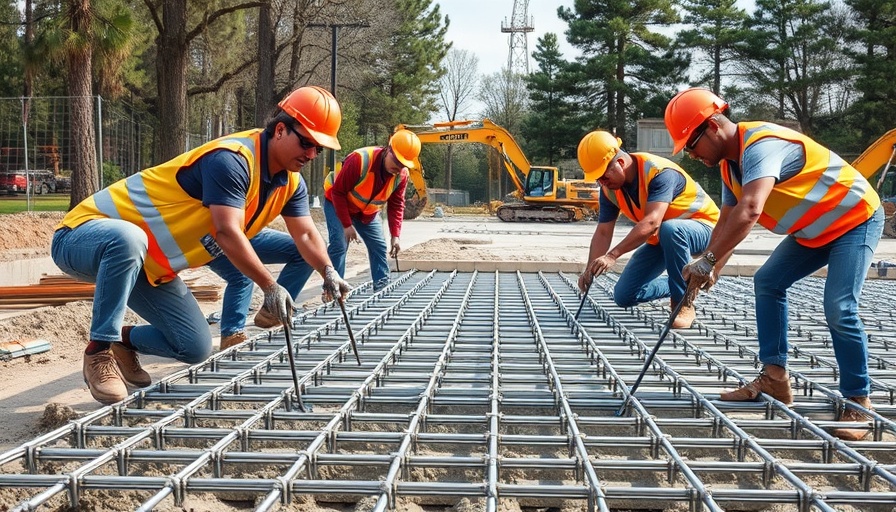
Understanding Stainless Bonded Rebar's Introduction in California
In a significant move towards enhancing the durability of infrastructure, the California Department of Transportation (Caltrans) has introduced stainless-bonded rebar in a recently constructed bridge. This innovative material aims to resist corrosion and extend the lifespan of structures, which is especially crucial in a state often targeted by environmental factors that compromise infrastructure integrity.
Why Durability Matters in Modern Construction
The importance of durability in construction cannot be overstated. Traditional reinforcing bars (rebar) are prone to rust and corrosion over time, leading to costly repairs and risk of structural failures. With high-profile failures in various infrastructure, the advent of stainless-bonded rebar presents a potentially game-changing solution. While preliminary reports praise its anti-corrosive properties, the durability claims surrounding this new material are still under scrutiny.
Historical Context of Rebar Usage
Historically, rebar has played a critical role in concrete design, providing tensile strength and stability. However, as infrastructure ages, many areas have faced challenges with rust-induced failures. The introduction of stainless-bonded rebar is a progressive step that reflects lessons drawn from past failures grounded in corrosion. It aligns with the trend of utilizing advanced materials that promote safety and longevity, which is vital for expanding populations and urban environments.
Economic Implications of Innovative Materials
While the initial investment in stainless-bonded rebar may be higher than traditional options, the long-term economic advantages could outweigh costs. Reduced maintenance and extended service life mean that projects utilizing stainless-bonded rebar could save municipalities and taxpayers significant amounts in future repairs. Evaluating these economic benefits is essential for stakeholders considering this material for future projects.
Potential Challenges and Concerns
Despite the apparent advantages, the transition to stainless-bonded rebar isn’t without concerns. Industry experts recommend cautious implementation, noting that the long-term performance and behavior of stainless-bonded rebar in various environmental conditions need further study. Unearthing these insights will be fundamental as municipalities weigh the options available for their infrastructure needs.
Future Opportunities for Home Contractors
For home service contractors, the advancement of materials like stainless-bonded rebar presents a unique opportunity. Understanding the properties and benefits of this innovative material can position contractors as experts in providing solutions to homeowners looking to upgrade their property while ensuring longevity. Educating clients on the advantages of modern materials not only builds trust but also opens avenues for additional services in renovations and repairs.
Conclusion: The Path Forward
As we embrace innovation in the form of stainless-bonded rebar, we must continue evaluating its long-term performance and reliability in construction projects. Homeowners and contractors alike should remain informed about developments in durable materials, as this knowledge will impact decisions in future home improvement projects. Stay updated and explore how materials innovation can significantly enhance your home renovation efforts.
 Add Row
Add Row  Add
Add 




Write A Comment